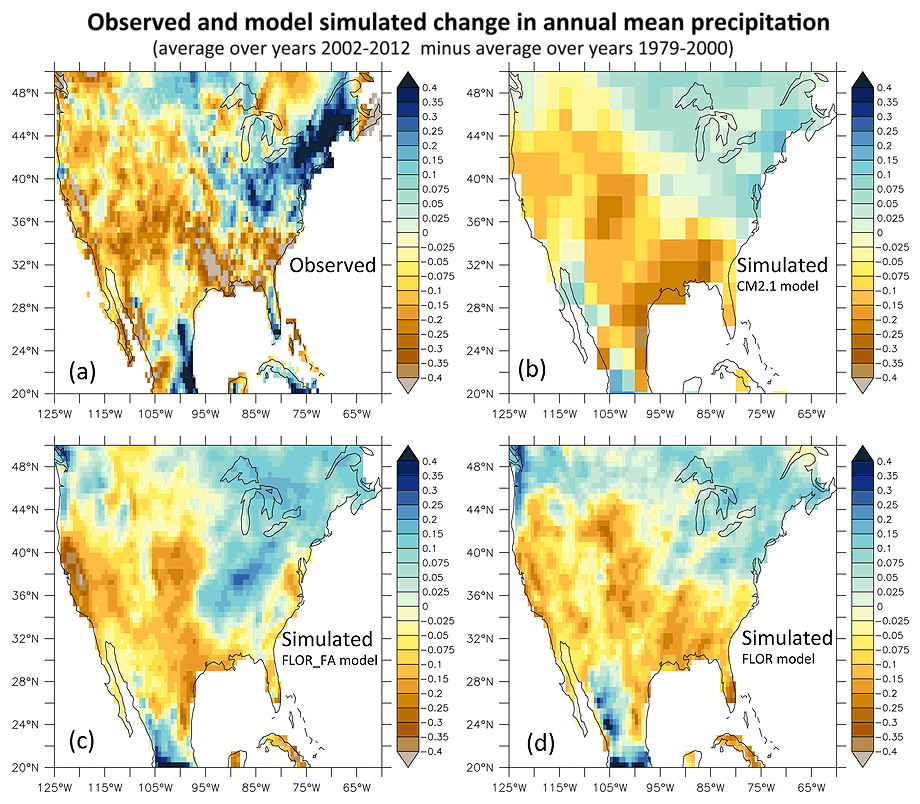March 13th, 2015
Key Findings
- Persistently strong easterly winds in the tropical Pacific from 2002-2013 initiate a series of changes in the ocean-atmosphere system that can explain most of the observed hiatus in global warming.
- These strong winds also appear to create conditions that lead to prolonged drought over the southwestern U.S. over the last decade.
- Our model results suggest that the majority of the drought over the southwestern U.S. over the last decade is due to these enhanced winds. If these winds are due to natural variability of the climate system, then the drought is also largely due to natural variability.
Thomas L. Delworth, Fanrong Zeng, Anthony Rosati, Gabriel Vecchi, and Andrew Wittenberg . Journal of Climate. DOI: 10.1175/JCLI-D-14-00616.1
Summary
The authors use three GFDL climate models (CM2.1, CM2.5_FLOR, CM2.5_FLOR_FA) to study the mechanisms behind the hiatus in global warming over the last decade and their possible relationship to southwestern U.S. drought. This study suggests that a majority of the drought in the southwestern U.S. over the last decade is the result of persistent anomalous wind conditions in the tropical Pacific, and is likely due to natural variability.
By modifying the winds in the models to reproduce the observed winds only in the tropical Pacific, the authors show that these changing winds can drive both the hiatus in global warming and drought conditions over the southwestern U.S. (see figure). If the observed wind changes are a result of natural variability, this suggests that both the hiatus and the drought over the southwestern U.S. are the product of natural variability of the climate system. If, however, the observed wind changes are a response to changing radiative forcings, this would have important implications for future climate in the southwestern US.
Additional experiments show that southwestern drought over the next decade will be strongly influenced by the behavior of the winds in the tropical Pacific. Further, idealized experiments show that this mechanism for producing a hiatus is self-limiting, and only persists for a decade or two in our models.
Potential future changes in water resources are an immense societal challenge. Improving our ability to understand observed changes is a vital contribution towards gaining confidence in our ability to reliably project future changes. The knowledge that a majority of the observed drought is likely due to natural variability could have important implications for water resource and infrastructure planning.



